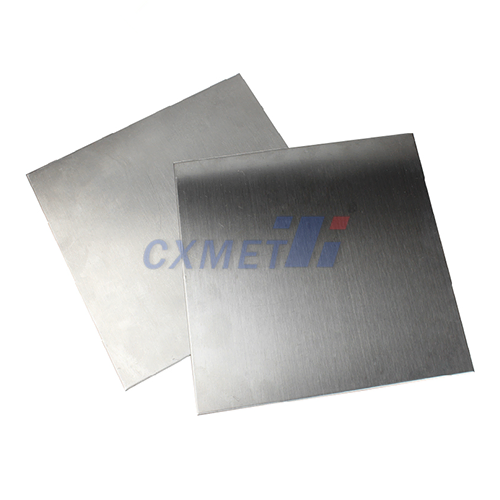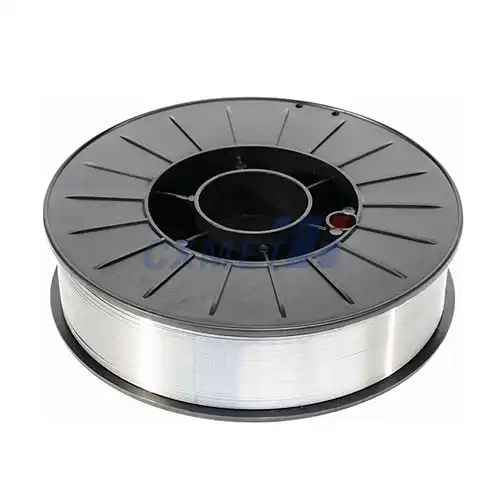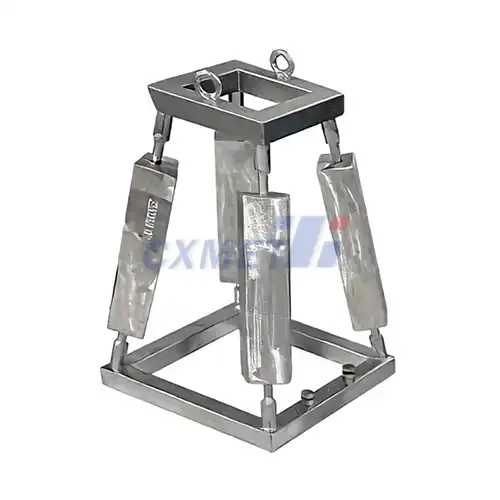- English
- French
- German
- Portuguese
- Spanish
- Russian
- Japanese
- Korean
- Arabic
- Greek
- German
- Turkish
- Italian
- Danish
- Romanian
- Indonesian
- Czech
- Afrikaans
- Swedish
- Polish
- Basque
- Catalan
- Esperanto
- Hindi
- Lao
- Albanian
- Amharic
- Armenian
- Azerbaijani
- Belarusian
- Bengali
- Bosnian
- Bulgarian
- Cebuano
- Chichewa
- Corsican
- Croatian
- Dutch
- Estonian
- Filipino
- Finnish
- Frisian
- Galician
- Georgian
- Gujarati
- Haitian
- Hausa
- Hawaiian
- Hebrew
- Hmong
- Hungarian
- Icelandic
- Igbo
- Javanese
- Kannada
- Kazakh
- Khmer
- Kurdish
- Kyrgyz
- Latin
- Latvian
- Lithuanian
- Luxembou..
- Macedonian
- Malagasy
- Malay
- Malayalam
- Maltese
- Maori
- Marathi
- Mongolian
- Burmese
- Nepali
- Norwegian
- Pashto
- Persian
- Punjabi
- Serbian
- Sesotho
- Sinhala
- Slovak
- Slovenian
- Somali
- Samoan
- Scots Gaelic
- Shona
- Sindhi
- Sundanese
- Swahili
- Tajik
- Tamil
- Telugu
- Thai
- Ukrainian
- Urdu
- Uzbek
- Vietnamese
- Welsh
- Xhosa
- Yiddish
- Yoruba
- Zulu
How Do GR4 Titanium Tubes Perform in Corrosive Environments?
Grade 4 titanium tubes, known for their exceptional corrosion resistance and strength-to-weight ratio, are widely used in various industries where exposure to corrosive environments is a concern. This blog post explores the performance of GR4 titanium tubes in corrosive settings, examining their properties, advantages, and potential limitations. We'll delve into the factors that contribute to their corrosion resistance and discuss specific applications where these tubes excel.
What are the key properties of GR4 titanium tubing?
Grade 4 titanium, also known as commercially pure (CP) titanium, is renowned for its excellent combination of strength and corrosion resistance. This alloy contains a minimum of 99% titanium, with small amounts of iron, carbon, nitrogen, hydrogen, and oxygen as alloying elements. These trace elements contribute to the material's enhanced mechanical properties compared to lower grades of CP titanium.
Key properties of GR4 titanium tubing include:
1. High strength-to-weight ratio: GR4 titanium offers an impressive strength-to-weight ratio, making it ideal for applications where weight reduction is crucial without compromising structural integrity.
2. Excellent corrosion resistance: The formation of a stable, passive oxide layer on the surface of GR4 titanium provides exceptional resistance to various corrosive environments, including saltwater, acids, and industrial chemicals.
3. Biocompatibility: GR4 titanium is biocompatible, making it suitable for use in medical implants and devices that come into contact with human tissue or bodily fluids.
4. Low thermal expansion: The material exhibits low thermal expansion, which contributes to its dimensional stability across a wide range of temperatures.
5. Non-magnetic properties: GR4 titanium is non-magnetic, making it suitable for applications where magnetic interference is a concern.
6. High fatigue strength: The alloy demonstrates excellent fatigue resistance, allowing it to withstand cyclic loading without failure.
7. Weldability: GR4 titanium can be readily welded using various techniques, including TIG (Tungsten Inert Gas) welding and electron beam welding.
These properties make GR4 titanium tubing an excellent choice for applications in corrosive environments across various industries, including aerospace, chemical processing, marine engineering, and medical technology.
The combination of high strength and corrosion resistance allows GR4 titanium tubes to maintain their structural integrity and performance even when exposed to harsh chemicals or saltwater. This makes them particularly valuable in offshore oil and gas production, desalination plants, and marine applications where traditional materials may quickly degrade.
In the aerospace industry, GR4 titanium tubing is often used in hydraulic systems and other components exposed to corrosive fluids. The material's low weight and high strength contribute to fuel efficiency and overall performance of aircraft.
For medical applications, the biocompatibility of GR4 titanium, coupled with its corrosion resistance, makes it an ideal choice for surgical instruments, implants, and devices that may come into contact with bodily fluids or aggressive cleaning agents.
Understanding the key properties of GR4 titanium tubing is essential for engineers and designers when selecting materials for corrosive environment applications. The unique combination of strength, corrosion resistance, and other beneficial characteristics makes GR4 titanium a versatile and reliable choice for many challenging environments.
How does GR4 titanium compare to other materials in corrosive environments?
When it comes to performance in corrosive environments, GR4 titanium tubing stands out as a superior material compared to many alternatives. To fully appreciate its advantages, it's essential to compare GR4 titanium with other commonly used materials in similar applications.
Comparison with Stainless Steel:
Stainless steel, particularly grades like 316L, is often considered for corrosion-resistant applications. However, GR4 titanium generally outperforms stainless steel in several aspects:
1. Corrosion resistance: While both materials form passive oxide layers, titanium's oxide film is more stable and resistant to breakdown in aggressive environments. GR4 titanium exhibits superior resistance to pitting and crevice corrosion, especially in chloride-rich environments like seawater.
2. Strength-to-weight ratio: Titanium offers a higher strength-to-weight ratio than stainless steel, allowing for lighter components without sacrificing structural integrity.
3. Temperature resistance: GR4 titanium maintains its properties at higher temperatures compared to many stainless steel grades, making it suitable for high-temperature corrosive environments.
4. Galvanic corrosion: Titanium is more noble than stainless steel in the galvanic series, reducing the risk of galvanic corrosion when in contact with other metals.
Comparison with Nickel Alloys:
Nickel alloys like Inconel and Hastelloy are known for their excellent corrosion resistance in extreme environments. When compared to these alloys, GR4 titanium offers:
1. Lower density: Titanium is significantly lighter than nickel alloys, providing weight savings in applications where mass is a critical factor.
2. Comparable corrosion resistance: In many environments, GR4 titanium matches or exceeds the corrosion resistance of nickel alloys, particularly in oxidizing acids and chloride-containing media.
3. Cost-effectiveness: While initial material costs may be higher, the longevity and reduced maintenance requirements of titanium can result in lower lifecycle costs compared to nickel alloys in certain applications.
Comparison with Aluminum Alloys:
Aluminum alloys are often chosen for their light weight and corrosion resistance in mild environments. However, GR4 titanium offers several advantages:
1. Superior corrosion resistance: Titanium significantly outperforms aluminum in aggressive environments, particularly those containing chlorides or acidic media.
2. Higher strength: GR4 titanium provides much higher strength than aluminum alloys, allowing for thinner-walled tubing and reduced material usage in many applications.
3. Temperature resistance: Titanium retains its properties at much higher temperatures than aluminum, expanding its range of suitable applications.
Performance in Specific Corrosive Environments:
1. Seawater: GR4 titanium exhibits exceptional resistance to seawater corrosion, outperforming most other materials. It remains virtually immune to pitting and crevice corrosion in marine environments, making it ideal for offshore and marine applications.
2. Chemical processing: In chemical processing industries, GR4 titanium tubing resists a wide range of chemicals, including organic and inorganic acids, chlorine compounds, and oxidizing agents. Its performance often surpasses that of stainless steels and competes with high-nickel alloys in many applications.
3. Chlorine and chloride-containing environments: Titanium's resistance to chloride-induced corrosion is superior to most other materials, including high-grade stainless steels. This makes GR4 titanium tubing an excellent choice for chlor-alkali production, desalination plants, and other chloride-rich environments.
4. Oxidizing acids: GR4 titanium performs exceptionally well in oxidizing acids like nitric acid, where many other materials, including some stainless steels, may fail.
5. Sour gas environments: In oil and gas applications involving sour gas (containing hydrogen sulfide), GR4 titanium demonstrates excellent resistance to sulfide stress cracking, outperforming many traditional materials used in these environments.
Limitations and Considerations:
While GR4 titanium excels in many corrosive environments, it's important to note its limitations:
1. Reducing acids: Titanium may not perform as well in strongly reducing acid environments, such as concentrated hydrochloric acid or sulfuric acid at elevated temperatures.
2. Fluoride sensitivity: Titanium can be sensitive to fluoride ions, which can break down its protective oxide layer. Special precautions are needed in fluoride-containing environments.
3. High-temperature oxidation: At very high temperatures (above 600°C), titanium can suffer from rapid oxidation, limiting its use in certain high-temperature applications.
In conclusion, GR4 titanium tubing offers superior performance in a wide range of corrosive environments compared to many traditional materials. Its exceptional corrosion resistance, combined with high strength-to-weight ratio and other beneficial properties, makes it an excellent choice for demanding applications in industries such as chemical processing, marine engineering, and oil and gas production. However, proper material selection should always consider the specific environment, operating conditions, and economic factors to ensure optimal performance and cost-effectiveness.
What are the best practices for maintaining GR4 titanium tubes in corrosive settings?
Maintaining GR4 titanium tubes in corrosive settings is crucial to ensure their longevity and optimal performance. While these tubes are inherently resistant to many forms of corrosion, proper maintenance practices can further extend their service life and prevent potential issues. Here are some best practices for maintaining GR4 titanium tubes in corrosive environments:
1. Regular Inspection and Monitoring:
Implementing a routine inspection program is essential for early detection of any signs of corrosion or degradation. This should include:
- Visual inspections: Regularly examine the surface of the tubes for any discoloration, pitting, or unusual deposits.
- Non-destructive testing: Utilize techniques such as ultrasonic testing or eddy current inspection to detect any internal flaws or wall thickness reductions.
- Monitoring of operating conditions: Keep track of temperature, pressure, and chemical composition of the fluids in contact with the tubes to ensure they remain within design parameters.
2. Proper Cleaning Procedures:
Maintaining cleanliness is crucial for preserving the protective oxide layer on titanium surfaces:
- Use appropriate cleaning agents: Choose cleaning solutions that are compatible with titanium. Avoid chlorinated solvents or strong reducing agents that may attack the oxide layer.
- Mechanical cleaning: When necessary, use soft brushes or non-metallic pads to avoid scratching the surface.
- Passivation: After cleaning or machining, consider re-passivating the surface to restore the protective oxide layer. This can be done using nitric acid or other oxidizing solutions designed for titanium.
3. Prevention of Galvanic Corrosion:
While titanium is noble in the galvanic series, precautions should still be taken:
- Use insulating materials: When connecting titanium tubes to less noble metals, use insulating gaskets or spacers to prevent direct metal-to-metal contact.
- Cathodic protection: In some marine or underground applications, implement cathodic protection systems to mitigate galvanic effects.
4. Temperature Management:
Control operating temperatures to prevent issues related to high-temperature oxidation:
- Monitor temperature limits: Ensure that the tubes are not exposed to temperatures exceeding their design limits, typically around 600°C for long-term exposure.
- Thermal insulation: Use appropriate insulation to maintain consistent temperatures and prevent localized overheating.
5. Chemical Environment Control:
Manage the chemical environment to avoid conditions that may compromise the titanium's corrosion resistance:
- pH monitoring: Maintain pH levels within the recommended range for titanium, typically between 3 and 11 for most applications.
- Avoid fluoride exposure: If fluoride-containing chemicals are present, implement special precautions or consider alternative materials for those specific sections.
- Oxygen control: In reducing environments, ensure sufficient oxygen is present to maintain the protective oxide layer. This may involve adding oxidizing agents or controlling dissolved oxygen levels in liquids.
6. Stress Management:
Minimize stress-related corrosion issues:
- Proper installation: Ensure tubes are installed without excessive stress or misalignment.
- Vibration control: Implement measures to reduce vibration, which can lead to fatigue and stress corrosion cracking.
- Stress relief: After welding or cold working, consider stress relief heat treatments to reduce residual stresses.
7. Surface Treatment and Coatings:
In some cases, additional surface treatments can enhance corrosion resistance:
- Anodizing: Anodic oxidation can create a thicker, more protective oxide layer on the titanium surface.
- Nitriding: For applications requiring enhanced wear resistance alongside corrosion resistance, consider nitriding treatments.
- Specialized coatings: In extreme environments, apply corrosion-resistant coatings designed for use with titanium.
8. Documentation and Record-Keeping:
Maintain detailed records of the tubes' history and performance:
- Material certificates: Keep records of material composition and properties.
- Maintenance history: Document all inspections, cleaning procedures, and any repairs or replacements.
- Operational data: Log exposure times, chemical compositions, and any unusual events or conditions.
9. Training and Education:
Ensure that personnel working with GR4 titanium tubes are properly trained:
- Material properties: Educate staff on the unique properties and behavior of titanium in corrosive environments.
- Handling procedures: Train personnel on proper handling, cleaning, and maintenance techniques specific to titanium.
- Emergency response: Prepare staff to recognize and respond to any signs of unexpected corrosion or failure.
10. Regular Review and Improvement:
Continuously assess and improve maintenance practices:
- Performance analysis: Regularly review the performance of the titanium tubes and adjust maintenance procedures as needed.
- Industry updates: Stay informed about new developments in titanium corrosion protection and maintenance techniques.
- Failure analysis: If any issues occur, conduct thorough failure analyses to prevent future occurrences and improve maintenance strategies.
By implementing these best practices, operators can maximize the lifespan and performance of GR4 titanium tubes in corrosive environments. The key is to maintain a proactive approach, combining regular inspections with preventive measures and staying informed about the specific conditions and potential risks in each application. With proper care and attention, GR4 titanium tubes can provide exceptional service life and reliability in even the most challenging corrosive settings.
At SHAANXI CXMET TECHNOLOGY CO., LTD, we take pride in our extensive product range, which caters to diverse customer needs. Our company is equipped with outstanding production and processing capabilities, ensuring the high quality and precision of our products. We are committed to innovation and continuously strive to develop new products, keeping us at the forefront of our industry. With leading technological development capabilities, we are able to adapt and evolve in a rapidly changing market. Furthermore, we offer customized solutions to meet the specific requirements of our clients. If you are interested in our products or wish to learn more about the intricate details of our offerings, please do not hesitate to contact us at sales@cxmet.com. Our team is always ready to assist you.
References:
1. ASTM International. (2021). ASTM B338-21 Standard Specification for Seamless and Welded Titanium and Titanium Alloy Tubes for Condensers and Heat Exchangers.
2. Schutz, R. W., & Thomas, D. E. (1987). Corrosion of titanium and titanium alloys. ASM Handbook, 13, 669-706.
3. Boyer, R., Welsch, G., & Collings, E. W. (Eds.). (1994). Materials properties handbook: titanium alloys. ASM international.
4. Donachie, M. J. (2000). Titanium: a technical guide. ASM international.
5. Revie, R. W., & Uhlig, H. H. (2008). Corrosion and corrosion control: an introduction to corrosion science and engineering. John Wiley & Sons.
6. Schütze, M., Roche, M., & Bender, R. (2016). Corrosion resistance of steels, nickel alloys, and zinc in aqueous media. John Wiley & Sons.
7. Leyens, C., & Peters, M. (Eds.). (2003). Titanium and titanium alloys: fundamentals and applications. John Wiley & Sons.
8. NACE International. (2018). Corrosion Prevention and Control in Water Treatment and Supply Systems.
9. Craig, B. D., & Anderson, D. S. (1995). Handbook of corrosion data. ASM international.
10. Schweitzer, P. A. (2009). Fundamentals of corrosion: mechanisms, causes, and preventative methods. CRC Press.





